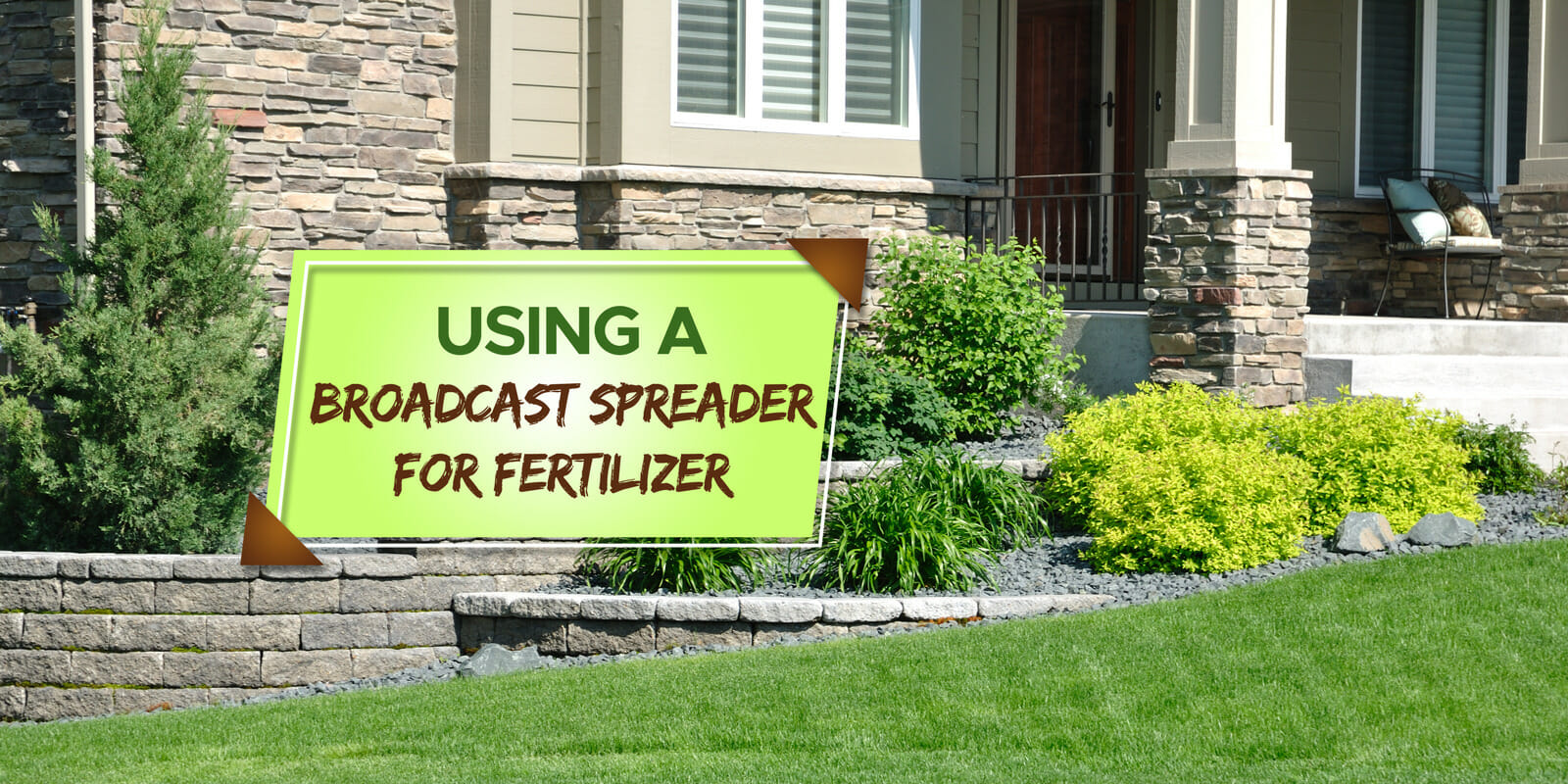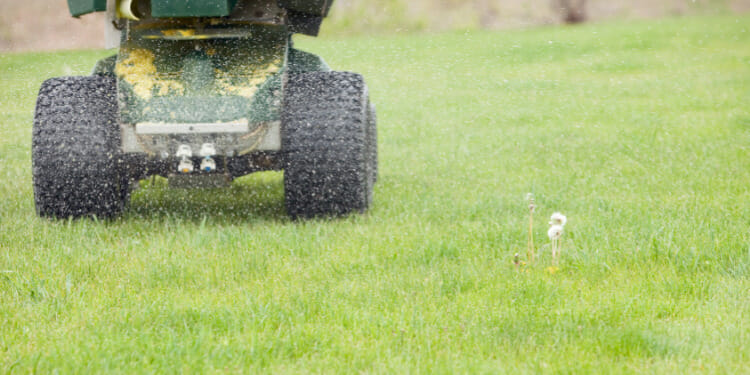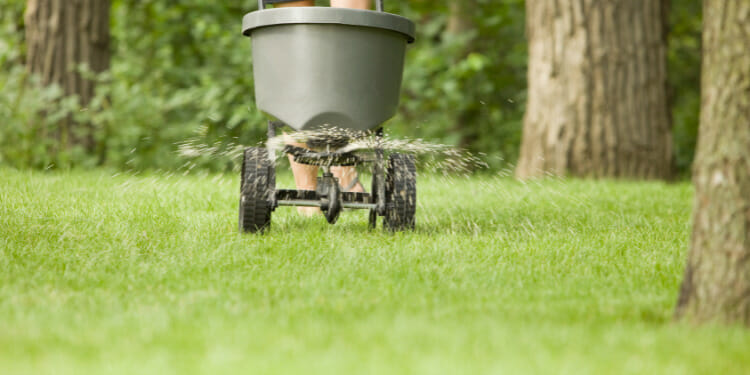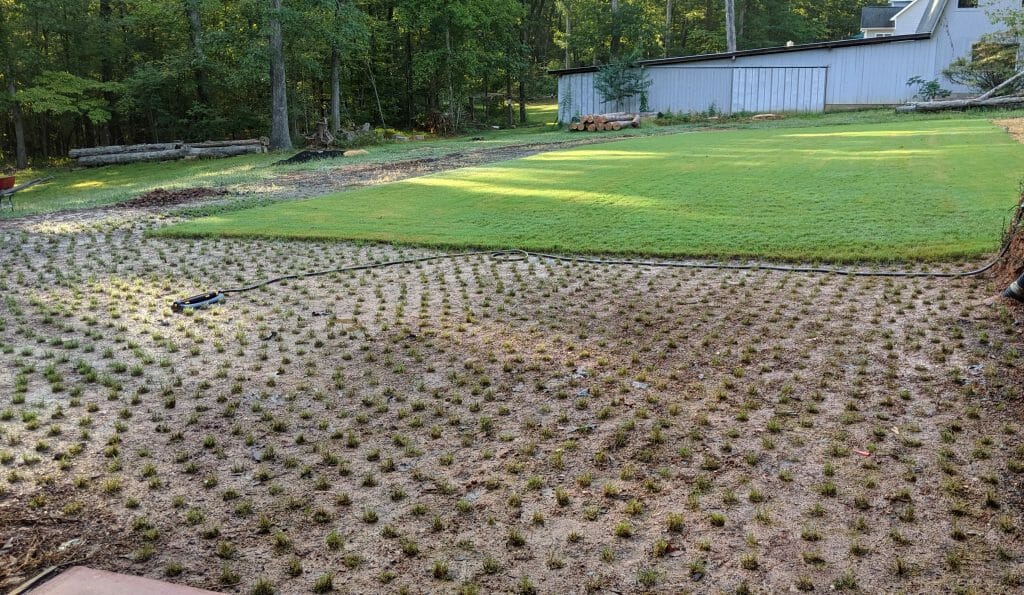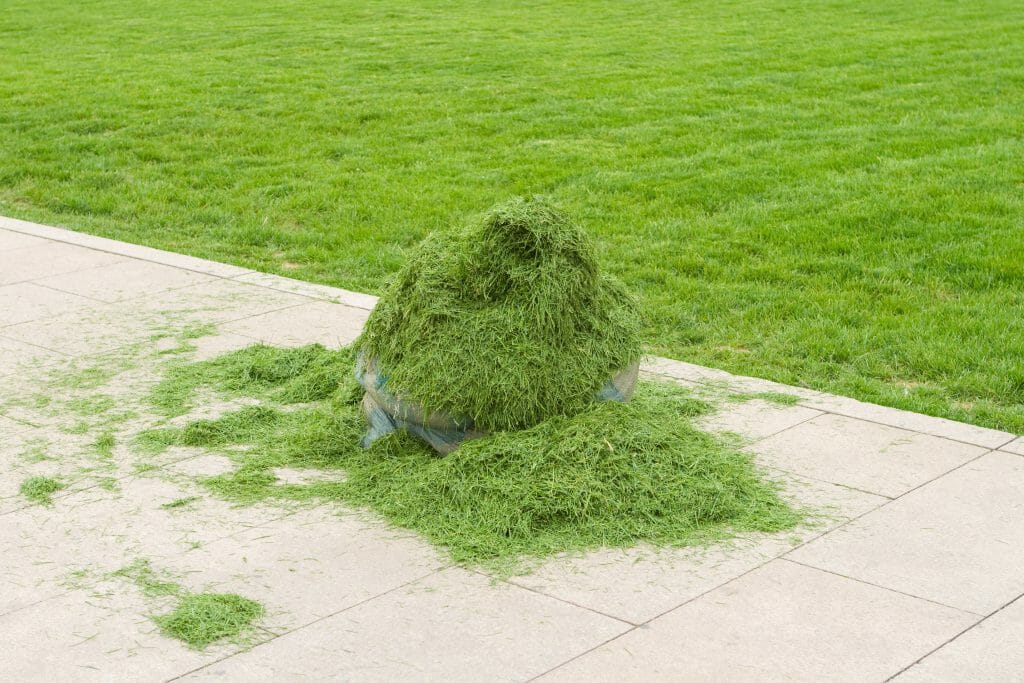Keeping your lawn looking green and lush requires a regular application of fertilizer, especially in spring. However, if you have a large lawn area, this can be quite tedious if you’re doing it by hand. For this reason, many people ask whether you can use a broadcast spreader for fertilizer.
Can you use a broadcast spreader for fertilizer? Yes. A broadcast spreader is absolutely the best tool to use if you have a large lawn area that needs a good feed. These units are designed for both fertilizer and grass seeds. They can also be used for other lawn products such as insecticides and fungicides.
Using a broadcast spreader to apply fertilizer to your lawn (we’ve reviewed our 5 favorites here) will save you heaps of time and means that your lawn will get all the nutrients that it needs.
What Are The Operating Principles Of A Broadcast Spreader?
A broadcast spreader will broadcast the fertilizer granules over your lawn as you push it along. It has a fan that blows out the required amount of fertilizer in all directions. This gives you a wide area that the fertilizer will be spread over.
These machines usually have a guard on the back that stops the granules from spraying onto your legs as you walk behind the spreader. Some broadcast spreaders also have a valve that you can close off to stop the granules from spraying out one of the sides.
This is particularly useful for when your lawn edges up close to a driveway, path or garden bed. You don’t want to waste any of the fertilizer and it can also stain concrete and paved areas.
What Are The Advantages Of Using A Broadcast Spreader?
Using a broadcast spreader to apply fertilizer to your lawn has many advantages. Firstly, because the granules are broadcast from all sides of the hopper, you get a much wider coverage than you would either doing it by hand or using a drop spreader.
This is particularly useful if you have a large area of lawn that needs to be fed on a regular basis. The wide spread of the unit means that you don’t have to make quite as many passes back and forth to get a fairly even spread of fertilizer.
You’ll also find that broadcast spreaders usually have quite a large hopper. This means you won’t have to refill it all that often. In fact, if you get a spreader with a reasonably sized hopper and have a medium lawn area, you might only have to fill the unit once.
How To Use A Broadcast Spreader For The Best Results
Broadcast spreaders aren’t all that difficult to use, but there are a few things that you should be aware of to ensure that you get the best possible results.
Choose The Right Fertilizer
A lawn fertilizer should have an equal amount of nitrogen, phosphorus and potassium. These three nutrients will ensure that your lawn grows strongly and nice and green. When looking at a pack of fertilizer you’ll see this as a set of numbers.
For example, 20:20:20 signifies that the fertilizer contains equal amounts of all three nutrients. The first number corresponds to the amount of nitrogen while the second number corresponds to the amount of phosphorus. Finally, the third number corresponds to the amount of potassium. This is also sometimes shown as N:P:K on a fertilizer pack.
Measure Your Lawn Area And Fill The Hopper
To work out how much fertilizer you’re going to need, you’re first going to have to know how much area you have to cover. After you’ve measured your lawn area, refer to the fertilizer pack which will tell you how many pounds of fertilizer to put in the hopper. When checking the quantity, remember that a broadcast spreader is also sometimes referred to as a rotary spreader.
Before you fill the hopper with the right amount of fertilizer granules, make sure that you close the flow lever.
Next, you want to set the flow rate. The recommended rate can be found on the fertilizer pack and is usually a number between 1 and 10. Check on the back of spreader below the handle to locate the dial that lets you set the flow rate and set it to the correct number.
Start Spreading Your Fertilizer
You want to start at one end of your lawn but don’t start completely at the edge of the lawn. Remember that your spreader will broadcast the granules out from both sides as well as the front, so you need to make an allowance for this.
As you walk forward, you need to push or squeeze the handle to start releasing the fertilizer granules. Walk at a slow and steady pace right around the perimeter of your lawn and stop when you get back to where you started. Make sure that you stop the release of fertilizer when you come to a stop to avoid releasing too much fertilizer which can cause the grass to burn.
Now that you’ve covered the perimeter of your lawn, you can work in strips back and forth across the lawn. As you do this, try to overlap each strip by a few inches to ensure that you get a good coverage. It might take you a bit of practice to work out how far the fertilizer actually gets dispersed.
Another thing that you can do is use a criss-cross pattern to go over your lawn like you would with a drop spreader. To start off, set the release rate to half of what is recommended. This ensures that you don’t over-fertilize.
Then, starting at one side, walk-in strips across your lawn going from north to south, for example. Make sure you allow plenty of space for the spread. Once you come to the end, turn and walk in strips the other way (east to west). This is one of the best ways to get excellent coverage of fertilizer right across your lawn.
Finally, make sure that you give your lawn a good soaking to allow the fertilizer to move down into the soil where it can be used by the roots of the grass.
In Summary
A broadcast spreader is ideal for dispersing fertilizer over your lawn area, especially if you have a large area to cover. It will make the job much easier and faster and you’ll be rewarded with a lush, green lawn in no time.

